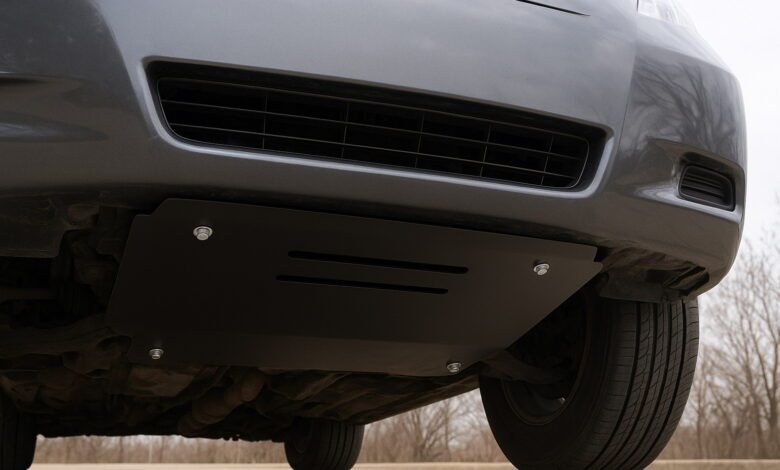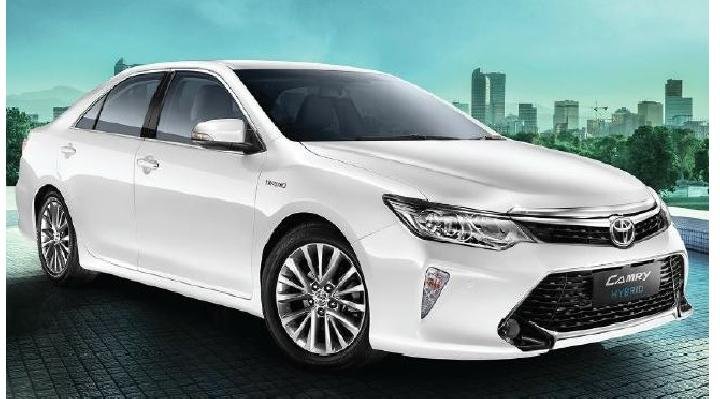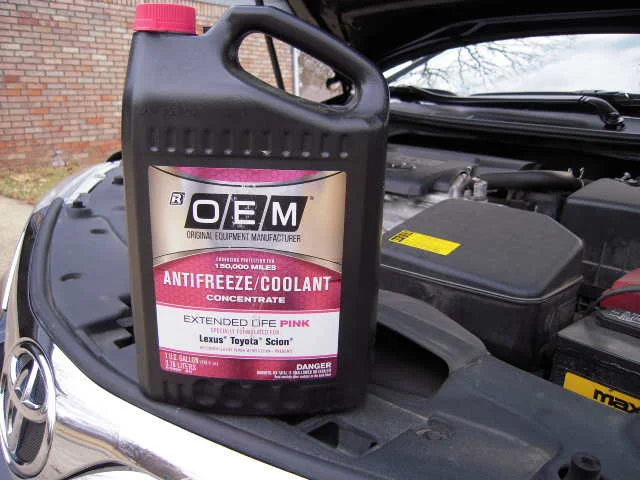Skid Plate for 2010 Toyota Camry SE – Best Protection, Fitment, and Installation Guide

The 2010 Toyota Camry SE has long been admired for its reliability, comfort, and efficiency. Yet, even the most dependable sedans face challenges on unpredictable roads. Potholes, loose gravel, and stray debris can pose a threat to your car’s underbody — particularly the oil pan, transmission housing, and exhaust components.
That’s where a skid plate for the 2010 Toyota Camry SE comes in. Originally designed for off-road vehicles, skid plates have become increasingly popular among sedan owners who value long-term durability. They act as a protective barrier between your vehicle’s vital components and the harsh elements of the road.
Think of it as armor for your Camry’s underside — an affordable yet effective way to prevent expensive repairs caused by debris impact or undercarriage scrapes. Whether you commute daily through city streets riddled with speed bumps or take the occasional country road trip, a quality skid plate can help your Camry last longer and perform better.
In This Article
Understanding the Skid Plate and Its Function
A skid plate is a metal or composite shield mounted underneath the car, typically below the engine and transmission area. Its primary role is to absorb or deflect impacts from road debris, rocks, and uneven surfaces that could otherwise damage critical components.
For the 2010 Toyota Camry SE, a skid plate doesn’t just add protection — it adds peace of mind. Many Camry owners are surprised to learn how exposed their undercarriage truly is. Without any additional shielding, components like the oil pan sit only inches above the road surface.
Common Skid Plate Materials
| Material | Strength | Weight | Corrosion Resistance | Typical Use |
| Steel | Very strong | Heavy | Moderate | Heavy-duty or off-road applications |
| Aluminum | Strong | Lightweight | Excellent | Ideal for sedans like the Camry SE |
| Composite (Plastic/ABS) | Moderate | Very light | Excellent | Light protection, budget-friendly |
Each material offers its own advantages. For the 2010 Camry SE, aluminum skid plates strike the best balance — they provide robust protection without adding significant weight, which means you won’t compromise fuel efficiency or performance.
Fun fact: Toyota’s OEM under-engine covers are usually made from thin plastic or fiber panels designed for aerodynamics, not impact resistance. Replacing or upgrading this panel with a metal skid plate gives you a much stronger defense.
Factory Undercarriage Design of the 2010 Toyota Camry SE
Before adding any aftermarket part, it’s essential to understand what your Camry already has underneath. The 2010 Toyota Camry SE, part of the XV40 generation (2007–2011), was designed with efficiency and comfort in mind rather than rugged protection.
What’s Underneath the 2010 Camry SE
- Oil Pan and Drain Plug – Directly below the engine, highly exposed to road hazards.
- Transmission Housing – Slightly recessed but still vulnerable to debris impact.
- Exhaust Piping and Catalytic Converter – Runs along the center, susceptible to dings or cracks.
- Plastic Splash Shield – A thin guard that offers minimal protection against hard impacts.
While this setup works fine for smooth highways, it offers limited durability on rougher surfaces or poorly maintained city roads. Even minor contact with uneven pavement or hidden debris can result in leaks, dents, or cracked oil pans — which are not cheap to fix.
Weak Points and Risks Without a Skid Plate
| Component | Potential Damage | Estimated Repair Cost (USD) |
| Oil Pan | Crack or puncture | $300 – $700 |
| Transmission Case | Impact damage, leaks | $800 – $1,500 |
| Exhaust System | Denting or misalignment | $250 – $600 |
| Plastic Shield | Cracking or detachment | $50 – $150 |
By installing a custom-fit skid plate for your 2010 Toyota Camry SE, you can avoid these costly repairs while maintaining your car’s aerodynamic flow. Many owners report improved confidence while driving on uneven terrain and even a slight reduction in cabin noise due to the skid plate’s damping effect.
“A skid plate might not make your Camry an off-roader, but it can definitely make it last like one.” — Automotive Maintenance Expert, AutoGuide Forum
Benefits of Installing a Skid Plate on a 2010 Toyota Camry SE
Adding a skid plate to your 2010 Toyota Camry SE isn’t just about protection — it’s an upgrade that enhances durability, comfort, and performance. While the Camry SE isn’t an off-road vehicle, it still faces plenty of daily hazards: uneven roads, speed bumps, and debris from other cars.
Key Benefits:
- Engine and Transmission Protection
The most obvious advantage is shielding the oil pan, transmission, and underbody components from impact damage. Even a small crack in your oil pan can lead to leaks and engine failure — a risk easily prevented by a strong skid plate. - Longer Component Lifespan
By reducing direct exposure to moisture, salt, and debris, the skid plate helps prevent corrosion on metal parts. This means fewer undercarriage repairs and extended longevity for your car’s mechanical systems. - Noise and Vibration Reduction
Aluminum and steel skid plates act as an extra sound barrier. Many Camry SE owners notice a quieter ride, especially when driving over rough asphalt or gravel. - Improved Aerodynamics
A well-fitted skid plate can smooth out undercar airflow, leading to slightly better fuel efficiency and stability at highway speeds. - Better Resale Value
A well-protected undercarriage translates to a cleaner vehicle history report and a higher resale value when you decide to sell or trade in your Camry.
According to an industry report from Edmunds, vehicles with visible underbody protection tend to retain up to 3–5% more resale value compared to those with underbody damage.
Types of Skid Plates for 2010 Toyota Camry SE
Not all skid plates are the same. Depending on your driving habits, budget, and performance goals, you can choose between OEM (Original Equipment Manufacturer) and aftermarket options.
1. OEM Skid Plates (Factory Options)
Toyota offers OEM-style under-engine covers designed for a precise fit on the 2010 Camry SE. These are typically made of composite plastic or lightweight aluminum and attach easily to existing mounting points.
Pros:
- Perfect fit, no modification needed.
- Maintains factory warranty and aerodynamics.
- Easy to install or replace.
Cons:
- Often thinner than aftermarket options.
- Limited protection against hard impacts.
2. Aftermarket Skid Plates
Aftermarket brands create heavy-duty skid plates with improved strength and thicker materials. They’re ideal for drivers who encounter rougher terrain or want maximum protection.
Pros:
- Thicker material for better durability.
- Wider coverage area under the engine and transmission.
- Available in different finishes (powder-coated, polished aluminum, etc.).
Cons:
- Some require drilling or custom mounts.
- May slightly alter aerodynamics if poorly installed.
3. Custom Fabricated Skid Plates
For enthusiasts or those with specific needs, custom shops can design skid plates tailored to your driving conditions. These often use aircraft-grade aluminum or reinforced steel for maximum protection.
| Type | Material | Protection Level | Cost Range (USD) | Installation Difficulty |
| OEM | Plastic / Thin Aluminum | Moderate | $100 – $250 | Easy |
| Aftermarket | Aluminum / Steel | High | $200 – $450 | Moderate |
| Custom | Aluminum / Steel | Very High | $400 – $700 | Advanced |
If you drive mostly on highways or city roads, an aftermarket aluminum skid plate is a great middle-ground choice — lightweight yet strong enough to handle daily wear and tear.
Material Comparison: Aluminum vs. Steel vs. Plastic Skid Plates
Choosing the right skid plate material is just as important as choosing the right brand. Each material offers a unique balance of strength, weight, and corrosion resistance.
Aluminum Skid Plates
- Best for: Daily drivers and light rough-road users.
- Advantages: Lightweight, rust-resistant, dissipates heat efficiently.
- Downside: Slightly less impact-resistant than steel under extreme hits.
A 4mm aluminum plate can handle most debris impacts without bending — ideal for the Camry SE’s moderate ground clearance.
Steel Skid Plates
- Best for: Drivers in rural areas or rough road conditions.
- Advantages: Extremely durable and resistant to dents.
- Downside: Heavier, which can affect fuel economy slightly, and prone to rust if not coated properly.
Plastic (ABS/Composite) Skid Plates
- Best for: Urban commuters seeking basic splash protection.
- Advantages: Lightweight, corrosion-proof, easy to install.
- Downside: Provides minimal protection against sharp impacts; not suitable for high debris zones.
| Feature | Aluminum | Steel | Plastic/Composite |
| Strength | High | Very High | Moderate |
| Weight | Light | Heavy | Very Light |
| Rust Resistance | Excellent | Poor (unless coated) | Excellent |
| Maintenance | Low | Moderate | Low |
| Best Use Case | City + Highway | Rough terrain | Smooth roads only |
For the 2010 Toyota Camry SE, aluminum skid plates are the smart choice. They strike a perfect balance between protection, weight, and longevity — without negatively affecting ride comfort or fuel economy.
Compatibility and Fitment for the 2010 Toyota Camry SE
Before ordering or installing a skid plate for your 2010 Toyota Camry SE, ensuring correct compatibility is crucial. The Camry has multiple trims and model generations, and not every skid plate fits all of them perfectly.
Fitment Overview
The 2010 Toyota Camry SE belongs to the XV40 generation, produced from 2007 to 2011. This generation shares a common undercarriage design, which means skid plates built for any of those model years typically fit without modification.
Compatible Model Years:
✅ 2007 Toyota Camry SE
✅ 2008 Toyota Camry SE
✅ 2009 Toyota Camry SE
✅ 2010 Toyota Camry SE
✅ 2011 Toyota Camry SE
However, if your Camry has been modified (lowered suspension, aftermarket exhaust, etc.), you’ll need to double-check clearance and mounting points before purchase.
Fitment Tips
- Always verify engine type (2.5L 4-cylinder or 3.5L V6). Some skid plates are designed specifically for one engine layout.
- Ensure mounting holes align with existing factory bolt locations.
- Review manufacturer notes — some plates require replacing OEM plastic clips with metal bolts.
- For the cleanest installation, avoid universal-fit plates; choose a custom-fit skid plate made specifically for the 2010 Camry SE.
Typical Mounting Points
Most plates attach using:
- Two front mounting bolts (behind the bumper line)
- Two rear brackets (near the subframe)
- Optional side fasteners for stability
A precise fit means your skid plate won’t rattle, drag, or affect airflow — giving you factory-level performance with aftermarket-level protection.
Installation Guide: How to Install a Skid Plate on a 2010 Toyota Camry SE
Installing a skid plate on your 2010 Toyota Camry SE can be a straightforward DIY project if you have basic tools and a bit of patience. However, as the Camry sits relatively low to the ground, using ramps or a lift is highly recommended for comfort and safety.
Tools You’ll Need
- Socket wrench set
- Flathead screwdriver
- Torque wrench
- Jack stands or car ramps
- Safety gloves and goggles
Step-by-Step Installation Process
- Lift the Vehicle Safely
Park your Camry on level ground, engage the parking brake, and use ramps or jack stands to raise the front of the car. - Remove the Factory Splash Shield
Unscrew or unclip the OEM plastic cover under the engine bay. Keep the screws — some may be reused. - Position the Skid Plate
Align the new skid plate with existing bolt holes. It should sit flush under the front subframe and not touch the exhaust or suspension. - Secure with Bolts or Mounting Brackets
Insert bolts into the mounting points and tighten by hand first. Then use a torque wrench to finish tightening according to the manufacturer’s torque specs (typically around 25–35 ft-lbs). - Check for Clearance and Fitment
Lower the car slowly and test for rattling, scraping, or misalignment by driving a short distance over a speed bump or uneven surface. - Inspect After One Week
Recheck bolts to ensure none have loosened due to vibration. Retighten if necessary.
Pro Tip: Apply anti-seize compound on bolts before installation — it’ll make future maintenance or removal much easier.
If you’re not comfortable with DIY work, most local garages or Toyota dealerships can install a skid plate in under an hour for $80–$120 in labor.
Maintenance and Inspection of Skid Plates
Like any other component, a skid plate needs occasional inspection to ensure it continues performing its job effectively.
Routine Inspection Schedule
- Every oil change (5,000–10,000 miles): Check for dents, corrosion, or loosened bolts.
- After hitting debris or large potholes: Inspect immediately for cracks or bending.
- Before rainy season or road trips: Ensure all bolts are tight and drainage holes are clear.
Cleaning Tips
- Rinse off mud, salt, and debris using a low-pressure hose.
- Avoid harsh chemicals that can strip protective coatings.
- If rust appears on steel plates, sand lightly and apply rust-resistant paint.
Common Signs of Wear
| Sign | Possible Cause | Recommended Action |
| Rattling sound | Loose bolts or washers | Tighten all fasteners |
| Scraping noise | Low ground clearance or misalignment | Adjust or reposition plate |
| Corrosion or rust | Moisture accumulation | Clean and recoat |
| Deep dents | High-impact debris | Replace skid plate if compromised |
Regular care ensures your skid plate for the 2010 Toyota Camry SE stays effective for years. Many quality aluminum plates last over 8–10 years with minimal upkeep.
“A skid plate is not a one-time install—it’s a long-term investment in your vehicle’s health.” — Tech Mechanic Journal
Common Issues and Troubleshooting After Installing a Skid Plate on a 2010 Toyota Camry SE
Even with the best installation, a skid plate for a 2010 Toyota Camry SE can occasionally present minor issues. Most are easy to fix once you know what to look for.
Common Problems and Their Fixes
| Issue | Possible Cause | Solution |
| Rattling or vibration | Loose bolts or improper torque | Tighten all bolts evenly; use thread-lock compound |
| Scraping sound when driving | Plate sits too low or misaligned | Adjust mounting position or add spacers |
| Difficult oil changes | Plate blocks oil drain plug | Opt for a design with removable access panel or quick-drain hole |
| Rust or corrosion | Exposure to salt or moisture | Clean regularly, apply anti-rust coating |
| Reduced clearance | Thicker aftermarket plate | Ensure minimum 4 inches of ground clearance; avoid speed bumps aggressively |
Most of these issues are installation-related, not product defects. That’s why precise fitment and correct torque settings matter.
Troubleshooting Checklist
- Verify no metal-to-metal contact with the exhaust or frame.
- Listen for new noises after driving over bumps.
- Check torque after the first 500 miles post-installation.
- If unsure, have a mechanic inspect fitment during your next service.
A correctly installed skid plate should be silent, stable, and secure — it should protect your Camry without you even noticing it’s there.
Cost Breakdown: Skid Plate for 2010 Toyota Camry SE
The total cost of a skid plate for the 2010 Toyota Camry SE depends on several factors — including material, brand, and installation method. Here’s a detailed breakdown to help plan your upgrade.
1. Skid Plate Cost by Type
| Type | Material | Price Range (USD) | Notes |
| OEM (Toyota Genuine) | Composite or thin aluminum | $100 – $220 | Best for stock fitment and warranty compatibility |
| Aftermarket (Aluminum) | Aircraft-grade aluminum | $220 – $400 | Offers best protection-to-weight ratio |
| Aftermarket (Steel) | Powder-coated steel | $250 – $450 | Heavy-duty protection, slightly heavier |
| Custom Fabricated | Aluminum or steel | $400 – $700 | Fully tailored, ideal for lowered or modified cars |
2. Installation Costs
- DIY installation: $0 (only requires hand tools and ramps)
- Professional installation: $80 – $120 (labor at local garage or Toyota service center)
3. Long-Term Savings
While the upfront cost may seem modest, the real value comes from preventing expensive underbody repairs:
| Component Protected | Average Repair Cost (USD) |
| Engine oil pan | $300 – $700 |
| Transmission case | $800 – $1,500 |
| Catalytic converter | $250 – $900 |
| Exhaust pipe | $200 – $500 |
That means your $250 skid plate could save thousands in the long run, especially if you frequently encounter uneven roads or construction zones.
Investing in underbody protection is a small cost compared to the peace of mind it brings.
Recommended Brands and Where to Buy a Skid Plate for 2010 Toyota Camry SE
Choosing a trusted manufacturer ensures you get a perfect fit, long lifespan, and reliable protection. While the Camry isn’t as commonly upgraded as SUVs or trucks, several reputable brands make skid plates compatible with the 2010 SE model.
Top-Rated Brands
| Brand | Highlights | Approx. Price Range |
| Toyota Genuine OEM | Factory fit, lightweight aluminum | $150 – $220 |
| RCI Metalworks | CNC-cut aluminum, powder-coated finish | $300 – $400 |
| Custom Aluminum Works | Custom-fit for Camry SE, durable design | $250 – $350 |
| LP Aventure | Heavy-duty aluminum, corrosion-resistant coating | $320 – $420 |
| Primitive Racing | Motorsport-grade aluminum for tough conditions | $350 – $450 |
Where to Buy
- Toyota Dealerships: Best for OEM parts and warranty coverage.
- Auto Parts Retailers: AutoZone, Advance Auto Parts, and NAPA often carry compatible plates.
- Online Stores: Amazon, CARiD, and RockAuto offer a wide range of OEM and aftermarket options with verified fitment listings.
- Specialty Fabricators: Ideal for custom-fit or performance-grade aluminum builds.
When shopping online, always verify:
- Model year (2007–2011 Camry SE)
- Engine type (2.5L or 3.5L)
- Bolt pattern compatibility
Many vendors now include 3D fitment data or installation videos, which can help confirm you’re purchasing the right one before checkout.
Performance and Real-World Reviews of Skid Plates for 2010 Toyota Camry SE
Real-world feedback from Camry owners paints a clear picture — installing a skid plate on the 2010 Toyota Camry SE provides tangible benefits beyond just protection.
Case Study: Daily Commuter Experience
Owner: Michael R., California
Michael drives over 60 miles daily on mixed highway and suburban roads. After replacing his cracked OEM plastic shield with a 3mm aluminum skid plate, he reported:
- Noticeable noise reduction from the engine bay.
- No oil pan damage after hitting several potholes during winter.
- Slightly improved stability at higher speeds due to smoother underbody airflow.
His maintenance report after 18 months showed zero corrosion and no need for re-tightening, proving the skid plate’s long-term reliability.
Case Study: Rural Road Use
Owner: Sarah T., Michigan
Sarah lives in an area with gravel and dirt roads. She installed a steel skid plate for extra durability. Over two years of use, she noted:
- The plate withstood multiple stone hits without bending.
- Oil changes took slightly longer due to the plate’s solid design, but she preferred the peace of mind.
- Minimal rust after seasonal exposure thanks to her routine cleaning and anti-rust spray.
“It’s the kind of upgrade you don’t think you need until it saves you hundreds in repairs.” — Sarah T.
These testimonials reflect what most Camry SE owners discover: a well-installed skid plate transforms the ownership experience, especially for those driving in unpredictable conditions.
Is It Worth Installing a Skid Plate on a 2010 Toyota Camry SE?
For most drivers, the answer is a confident yes. While the 2010 Toyota Camry SE was designed primarily for smooth roads, the realities of everyday driving — potholes, road debris, and uneven surfaces — justify this practical upgrade.
Reasons It’s Worth It
- Prevents Costly Damage: Protects vital engine components that can easily be punctured or cracked.
- Enhances Durability: Keeps your underbody in better shape over the long term.
- Adds Confidence: You can drive on rough or poorly maintained roads without constant worry.
- Minimal Downsides: Installation is simple, and aluminum plates have little to no effect on fuel economy.
In terms of cost-to-benefit ratio, the skid plate for the 2010 Toyota Camry SE ranks among the best-value modifications you can make. It’s affordable, functional, and preserves your car’s resale value.
If you often travel through construction zones, live in rural areas, or simply want better underbody protection, this upgrade is 100% worth it.
Conclusion
The 2010 Toyota Camry SE remains one of the most dependable sedans of its time — but like any vehicle, it has its weak spots. The undercarriage, exposed to everything from road salt to debris, is one of them. Installing a skid plate is a small yet powerful way to reinforce your Camry’s longevity.
By adding a custom-fit aluminum or steel skid plate, you’re effectively giving your vehicle armor — protection that pays for itself over time through fewer repairs, better durability, and a smoother, quieter ride.
Whether you choose an OEM or aftermarket option, the key is fitment and quality. Proper installation ensures maximum benefit and zero drawbacks.
“Protect what you can’t see — because that’s what keeps your car moving.”
For genuine Toyota parts and fitment information, you can visit Toyota’s official parts catalog to verify OEM options or find compatible accessories for your Camry SE.

When he’s not working his magic under the hood, Ethan Wilson is usually sharing his love for Toyota cars through his writing. Ethan’s got a special talent for breaking down complex car topics into easy-to-understand articles, making him a go-to source for Toyota enthusiasts everywhere.



